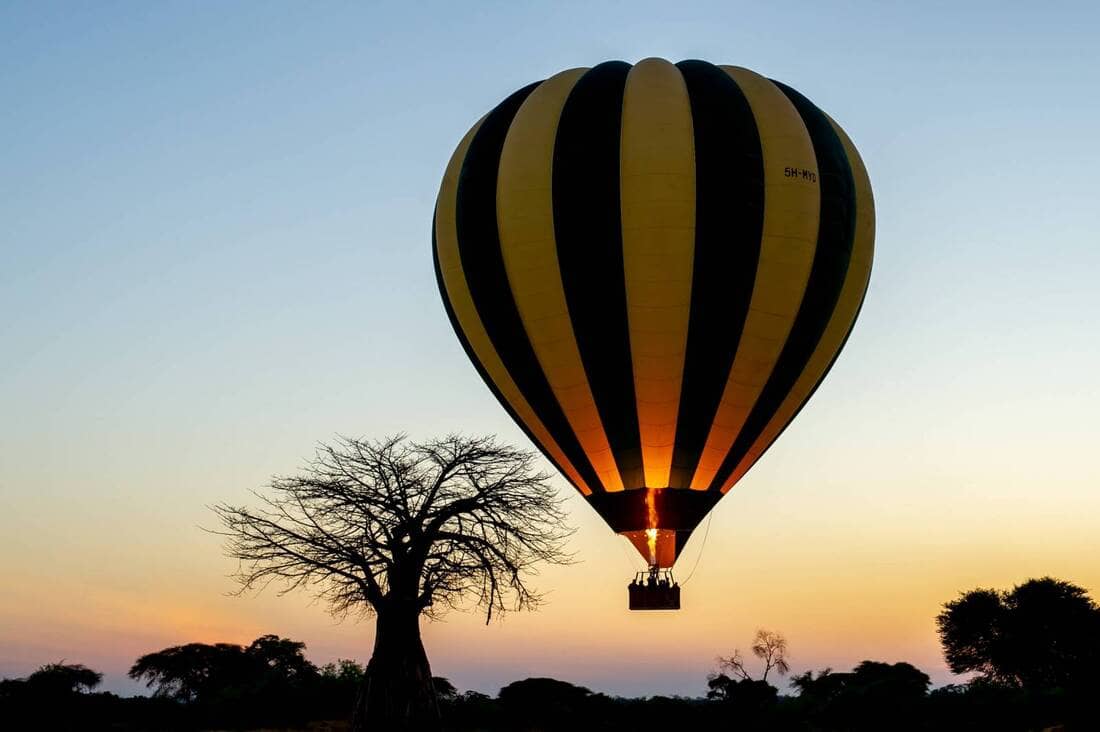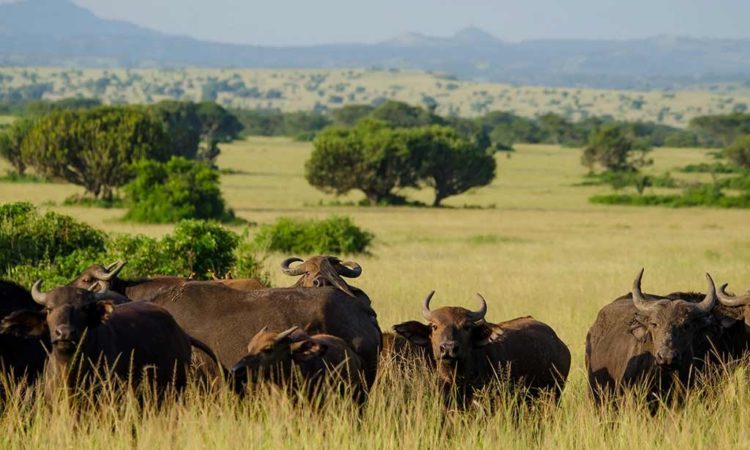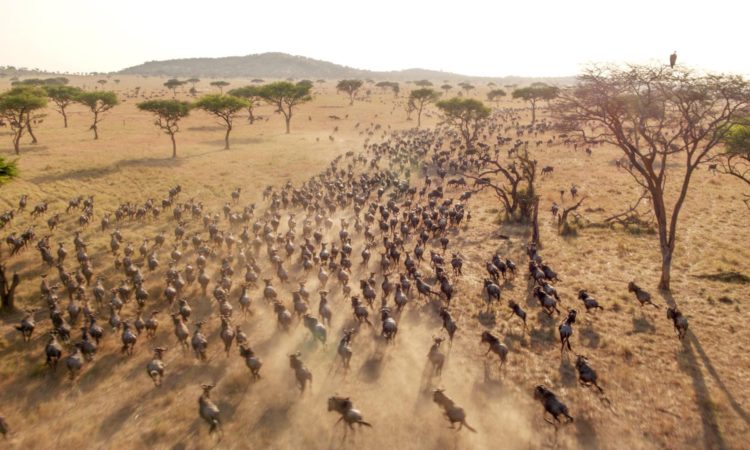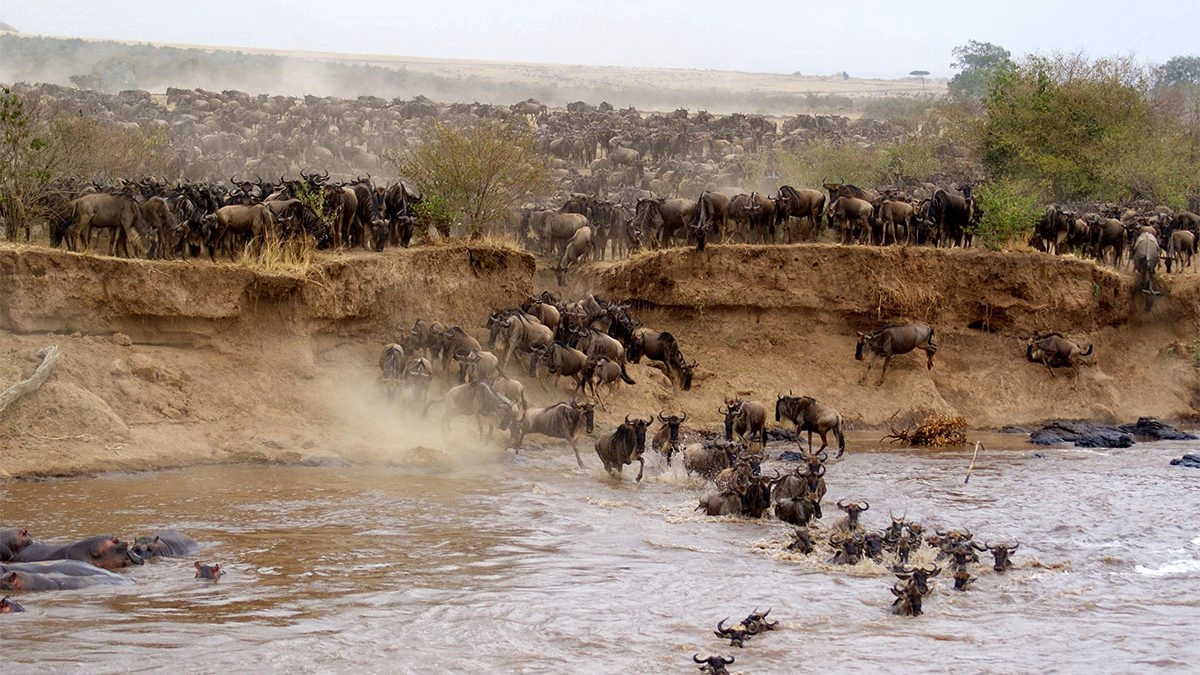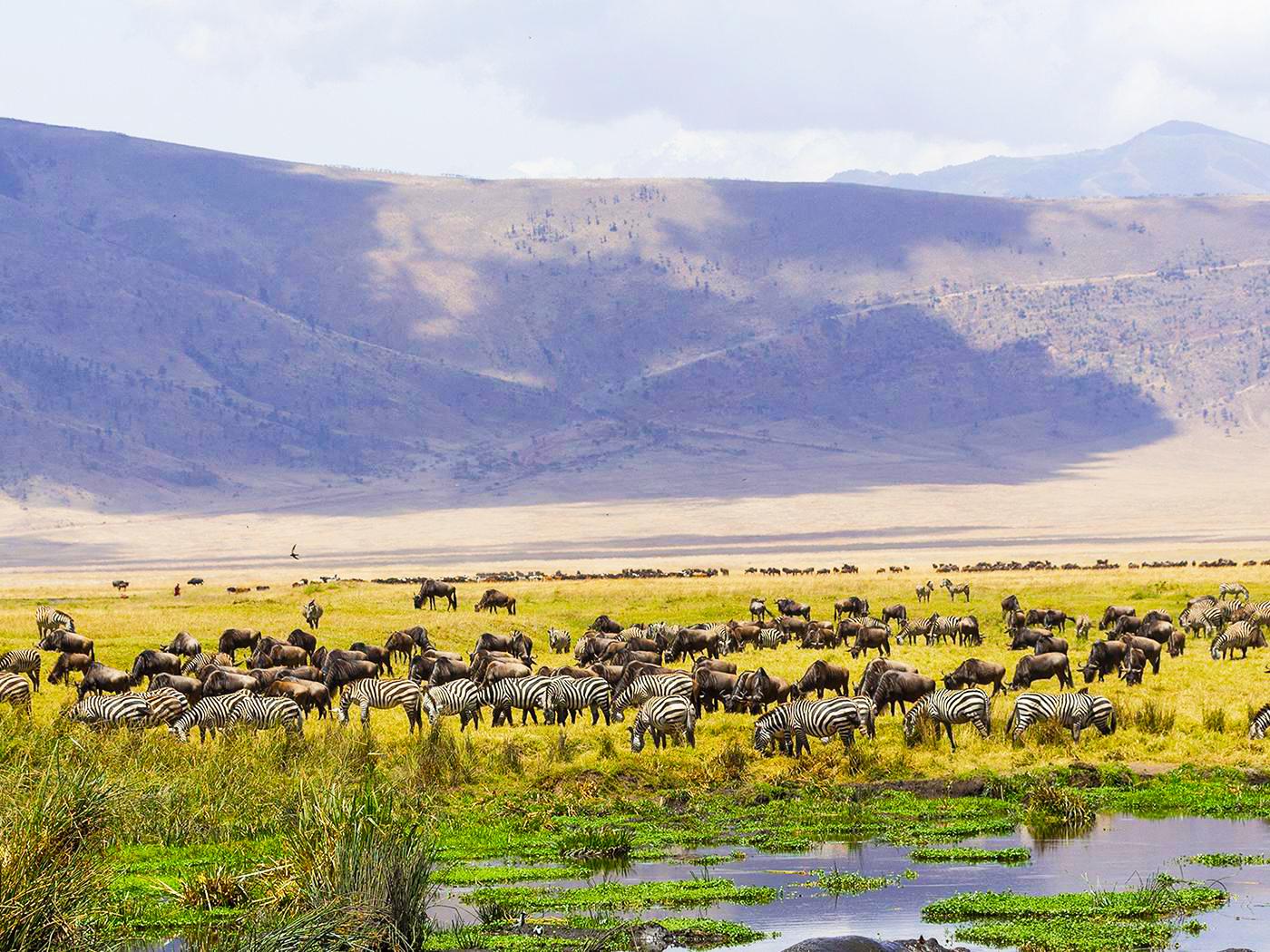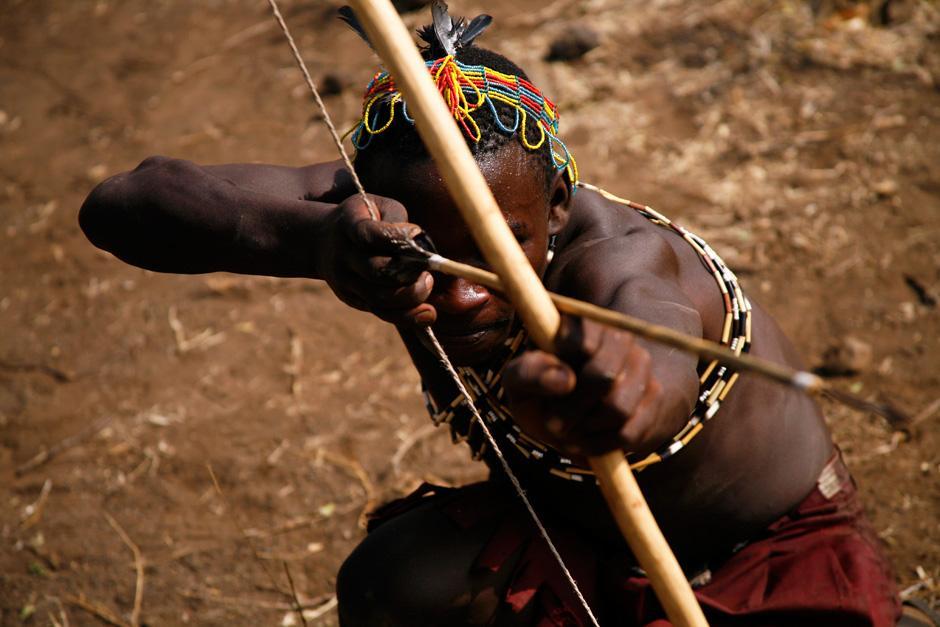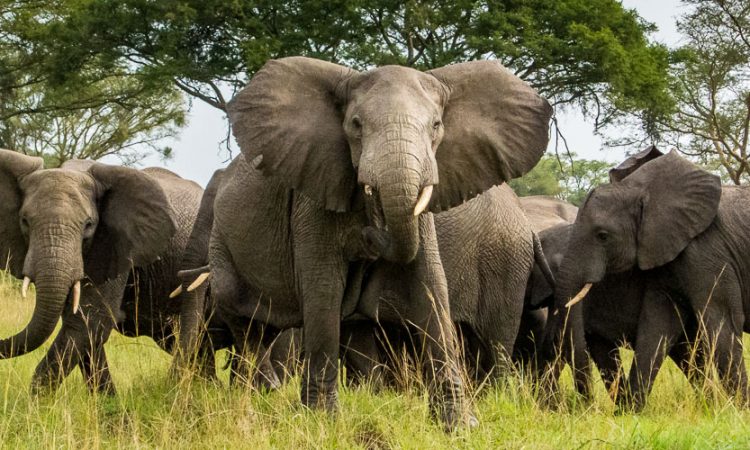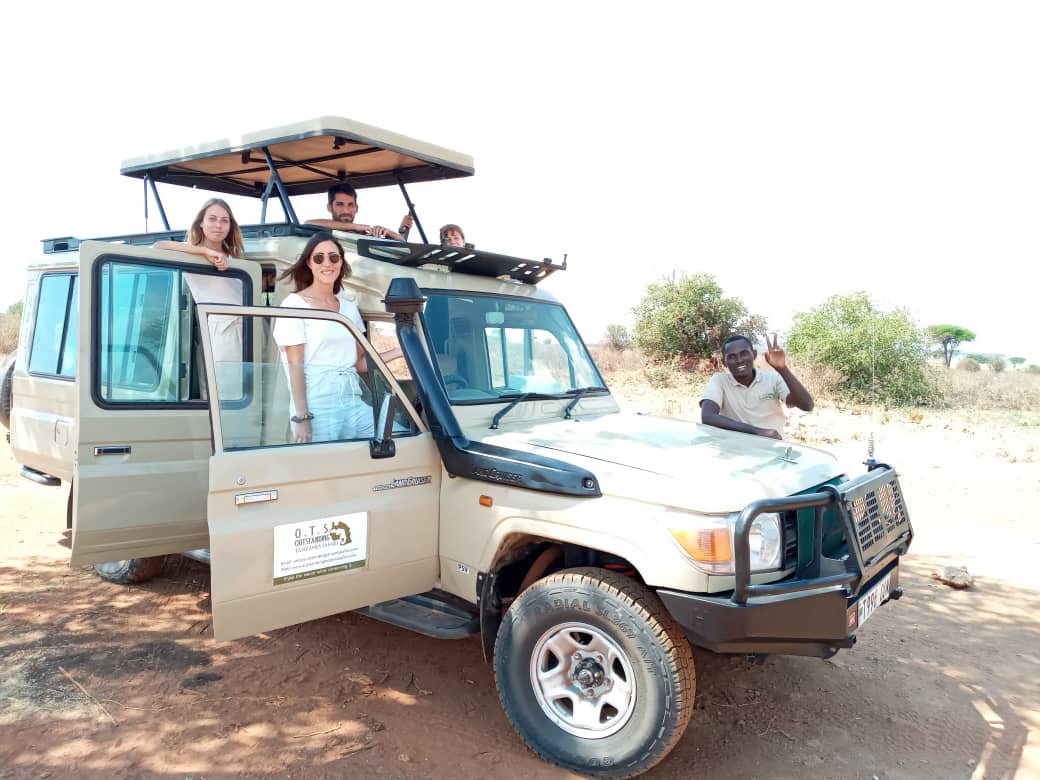While all national parks and lodges have toilet facilities available, there’s no telling when nature might call and you’ll need to make use of the famous ‘bush toilet’.
Having a packet of tissues or wet wipes in your pack is always a good idea.
SAFARI PACKING LIST
TRAVELLING TO TANZANIA: EVERYTHING YOU NEED TO KNOW
TANZANIA SAFARI PACKING LIST
SERENGETI WILDEBEEST MIGRATION CALENDAR
4×4 EXTENDED SAFARI VEHICLES
TRAVELLING TO TANZANIA: EVERYTHING YOU NEED TO KNOW
Introduction
The United Republic of Tanzania is a nation in central East Africa bordered by Kenya and Uganda to the north, Rwanda, Burundi and the Democratic Republic of the Congo to the west, and Zambia, Malawi and Mozambique to the south. The country’s eastern borders lie on the Indian Ocean. The United Republic of Tanzania is a unitary republic composed of 26 mikoa (regions).
A passport is required that is still valid for at least six months after the date of departure. A visa is required and costs approximately EUR 50.00 or USD 50,00 per person. The visa can be obtained at the Tanzania Embassy in your country or upon arrival at one of the international airports of Tanzania (not applicable to all nationalities). For a visa application in Tanzania, you do not need a photograph or a copy of a ticket, which are required by the embassies.
The currency in Tanzania is the Tanzanian Shilling. You can take cash Euro’s, Pounds or Dollars and exchange these at the airport or in your hotel or lodge for Tanzanian Shillings. In many locations like in your accommodation or in souvenir shops people prefer payments in U.S. Dollars, you will get back your change in U.S. Dollars or Shilling mostly with a normal exchange rate. In most places payments with credit card are also welcome. In the bigger cities there are also opportunities to get money through an ATM (cash machines), but when you are on safari there is often no opportunity and it is better to make arrangements in advance. When buying a souvenir in Tanzania it is customary to bargain a good price with the seller.
When you travel to Tanzania, there are no mandatory vaccinations, but you are urgently advised to get some of them.
DTP (Diphtheria, Tetanus and Polio): If you are previously vaccinated (such as in childhood) it is sufficient to have one injection every 15 years. When this is not the case, you should get two DTP injections with at least an interval of four weeks before you leave and get third one after six months. The duration of the protection is 15 years.
Yellow fever: At least 10 days before departure the injection must be obtained. The duration of protection is 10 years. When you travel to multiple destinations in Africa a stamp for proof of vaccination is mandatory.
Internet: Tanzania is a country where in many places Internet is available and also in daily life using the web is integrated. At various accommodations you can use a computer with internet, but the speed may not always be what you are used to. When you are really on safari you must keep in mind that you cannot often make use of the Internet. Mobile telephones: in Tanzania there are 3 different networks (Safaricom, Zain and Orange), which together have created a pretty strong network. It is surprising that even in the Serengeti or in other remote areas you can be reached by mobile phone. However, if you travel to remote areas do not count on an available network range. In and around cities you usually have excellent opportunities to make a mobile telephone call. When you arrive in Tanzania you can buy a mobile sim card at the airport and make calls in East Africa for a good price.
International calls: when you want to make a call abroad during your visit to Tanzania it can be pretty expensive, especially at the hotels. It is often a better idea to call with your own mobile phone.
Tanzania is one of the safest countries in East Africa, but you never can be too careful when you’re on the road. While safari areas are generally very safe, the country is no stranger to criminal activity. Like any other country in the world, there is always some risk of theft.
It is advisable that you listen closely to your guide’s advice at all times, and that is especially true in some urban areas. Either leave your valuables (such as many, electronics, credit cards, and documentation) behind in your hotel room’s safe, or carry them with you in concealed inner pockets.
Don’t flaunt your valuables in public, as this may draw unwanted attention to you. Pickpockets are particularly active in heavily touristed areas, so it pays to be cautious when in cities and areas popular with tourists.
It is always a good idea to make copies of all of your important documents and keep them in your luggage.
Tanzania has two official languages: Swahili and English. Swahili, which has its origins in Zanzibar, is the most commonly spoken language in both Tanzania and Kenya.
English is widely spoken, however you may wish to bring along a Swahili to English phrasebook to give you access to the basics. The locals are always appreciative if you know a little bit of Swahili!
TANZANIA SAFARI PACKING LIST
Introduction
What to Pack for Your Safari Packing for your first safari can be a bit daunting. What do you bring? What don’t you need? Below you’ll find our recommended list of things to bring along with you when you’re on safari.
Packing for your first safari can be a bit daunting. What do you bring? What don’t you need? Below you’ll find our recommended list of things to bring along with you when you’re on safari.
While there is plenty of room in our safari vehicles for your larger suitcase, it’s always handy to have a more manageable bag that you can have with you in the vehicle.
Nights and mornings in East Africa can be cold, so it’s always good to have something a little warmer to throw on until the sun warms the plains up.
You can check below for a better idea of what to wear on safari.
You never know when there’s going to be a sudden squall or downpour, so packing a lightweight rain jacket is a good idea.
While you’ll be safe and dry inside your safari vehicle, a rain jacket is a good option for when you’re getting about camp.
Much of your safari takes place within your safari vehicle, but you’ll need a comfortable pair of shoes or hiking boots for walking to your lodges, snapping photos from the picnic spot, or if you’ve added any walking safaris to your itinerary.
Even in the car, you’ll want a pair of comfortable shoes that cover your skin to prevent sunburn and insect bites.
Perfect for both sun protection and to ward off hungry mosquitoes, a long sleeve shirt and trousers are also a good option for a cold morning or evening.
If you’re staying in nicer lodges, you’ll also want these handy for dinner and drinks at the end of a long day.
The sun in East Africa can be quite intense, so sunglasses are a good protective measure and have the benefit of reducing glare while you’re game-viewing.
Sun protection should be a priority while you’re on safari. While your vehicle provides shade, having the top up for game-viewing means you’ll be exposed to the elements.
A good hat is a great way to avoid nasty burns or heatstroke.
Another valuable precaution against the often harsh equatorial sun, sunscreen, and lip balm will protect you where your clothes don’t.
Mosquitoes and tsetse flies are both capable of carrying diseases and their bites can be quite irritating or painful. Tsetse flies can deliver a particularly nasty sting.
A good insect repellent is a good way to ward off these blood-thirsty little guys.
It goes without saying that you’re going to want a camera for your safari adventure. While in some cases your smartphone will be enough to snap a shot, a camera with a good zoom lens is the perfect companion.
Outstanding Tanzania Safari vehicles come standard with a single pair of binoculars that you can share with your driver, but having your own pair is a good way to ensure you don’t miss a second of the action.
You don’t need an expensive pair. Even a travel-sized pair of binoculars is sufficient for game-viewing.
You don’t want to be midway through a day on safari and suddenly run out of battery for your camera.
Shadows of Africa vehicles come standard with in-car charging stations, but it’s always a good idea to travel with an additional battery.
Additional SD cards are also a good idea to ensure you don’t need to stop to delete photos.
The wilderness can be pretty dark, so a headlamp or flashlight can be essential when moving about camp after dark.
Many lodges provide these, but those staying in budget camps will want to bring their own.
You don’t need a hefty Lonely Planet for your safari, but having a wilderness guidebook is a good way to build a ‘to do list’ for your trip.
Your Shadows of Africa driver is a font of knowledge when it comes to animal, bird, and plant-life too. Don’t hesitate to ask questions!
Whether it’s to stay in touch, to share your photos, or just so you can snap pictures on the fly – bringing along your smartphone is a good idea.
Savvy travelers may wish to purchase a local SIM card, but many hotels have WiFi.
While on safari in Tanzania, our vehicles also come with WiFi, although this is dependent on location.
You’ll rarely find yourself without something to see while on safari, but there is going to be some downtime.
Whether it’s the drive to or from the airport or just a lazy night at your lodge, having a good book (or a Kindle) on hand is a great way to pass the time.
SERENGETI WILDEBEEST MIGRATION CALENDAR
Introduction
The Migration Monthly Timetable is to be used as a Guide. The Migration Pattern varies from one year to the next, as it all depends on the start of the rains. THE GREAT ANNUAL WILDEBEEST MIGRATION MONTH TO MONTH TIMETABLE The Migration Monthly Timetable is to be used as a Guide. The Migration Pattern varies from one year to the next, as it all depends on the start of the rains.
The migration is concentrated in the south-eastern Serengeti National Park, spilling over into the Ngorongoro Crater the wildebeest start to give birth.
The short-grass plains are the main feeding ground for over 1.7 million wildebeest, 800,000 zebra, and many gazelle. Predators follow close by, feeding on the newly born. There is plenty of food for the predators at this time. This is the main month for wildebeest births. The great herds are on the move towards the Ndutu Woodlands. This month is also known as the calving season.
The commencement of long and heavy rains is the time when the fresh grass is now depleted from several months of grazing and newborn wildebeest are strong enough to move and keep up with the migration. Now is when the migration heads westwards towards Maswa Game reserve in search of better grazing.
The heaviest rainy month and the herds are in the Maswa area, with the Wildebeest being almost evenly scattered in the region, although it is not a great month to view them as the region is very wet and roads are often impassable.
Rains come to an end and the herds start migrating northward, crossing the Grumeti River, where many wildebeest and zebra lose their lives every year but provide a yearly feast for the huge crocodiles who wait at the popular crossing points. This is a popular time for sighting the large cats. July /August All going on schedule, the migration should now be in the northern Serengeti crossing over to Kenya’s Masai Mara.
Regarded as the best months to see the River Crossing on the Mara River from Masai Mara, offering fantastic photographic opportunities.
The migration should now be in Kenya’s Masai Mara Nature Reserve just across the northern border from the Serengeti National Park. This is the best said to be the best time to visit Masai Mara.
The time when Maasai Mara Nature Reserve having plentiful supplies of water and good grazing, hence a popular month to view the great herds in the Masai Mara.
If the short rains come this month, the migrating herds of Wildebeest, Zebra, and Gazelle will start to head southwards, out of the Masai Mara National Reserve, crossing Kenya’s border in to Tanzania’s Serengeti National Park.
Usually, the migration will now be arriving on Serengeti’s Southern Plains, where there is an abundance of new, fresh young grass to feed on. When the migration heads southward to Southern Serengeti, the mig.
4×4 EXTENDED SAFARI VEHICLES
Introduction
Outstanding Tanzania Safari is one of the very few safari tour operators in Tanzania that still owns and operates our own fleet of custom built safari vehicles.
Outstanding Tanzania Safari is one of the very few safari tour operators in Tanzania that still owns and operates our own fleet of custom-built safari vehicles.
Our safari vehicles with the hatched roof for shade against sunny African wilderness; are the extended body with roomy seats for comfortable sitting and stretching out legs. Every guest is accessible to the window seat. Cars are also fitted with fridges, power charge sockets and VHF radio calls for easy and fast communication with the base office. A vehicle is only as good as the driver and drivers are excellent. Each one is custom designed with an extra large photographic roof hatch, extra dust proofing, comfortable seats with seat belts and canvas covers, first aid kits, binoculars, a selection of field guides and a cooler stocked with bottles of mineral water supplied by Outstanding Tanzania Safari at no additional cost. Every safari vehicle carries a maximum of six passengers so that every passenger is guaranteed a window seat and access to the photographic roof hatch at all times during the safari. Every Outstanding Tanzania Safari vehicle is equipped with a long-range radio system linked to our head office in Arusha. Every safari vehicle is serviced after each safari.
Driver guides are all trained naturalists who have more than five years experience with us, they know their way around the parks and are skilled at spotting and identifying wildlife. They are also trained to prepare delicious picnic lunches in the bush so that you can maximize your game viewing opportunities.
Game viewing from the vehicle is one of the core activities of a wildlife safari. Drives are conducted in the morning and evening, but depending on the time of year and weather conditions may extend throughout the day. It is often best to head out for a game drive very early after a quick cup of coffee and a muffin, returning later for a leisurely breakfast. Alternatively, a camp breakfast could be followed by a long morning game scouting drive with a picnic carried along and eaten whenever the opportunity presents itself.
Evening game drives are generally very rewarding, and it is during these times that we expect the best light for photography and enjoying the ever magnificent African bush scenery.
Why Outstanding Tanzania Safaris
Safari Tour Specialists35+
We have many experts that have been in hospitality industry for long and who can deliver full satisfaction to trevellers
Years of experience12
We have been here for long and we understand well what our clients needs. An adventurous journey with us.
Safe traveling98%
Our guides a fully vaccinated and take full precaution on all rules that are stipulated under the safety rules.

